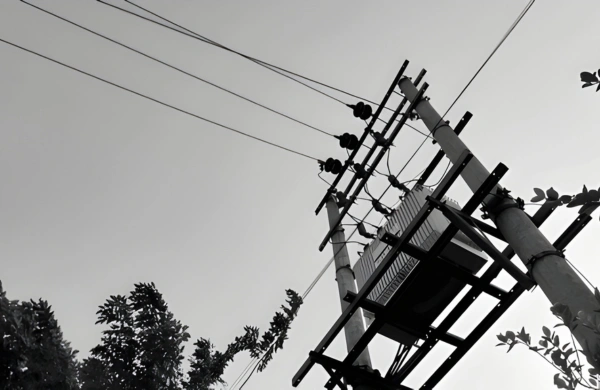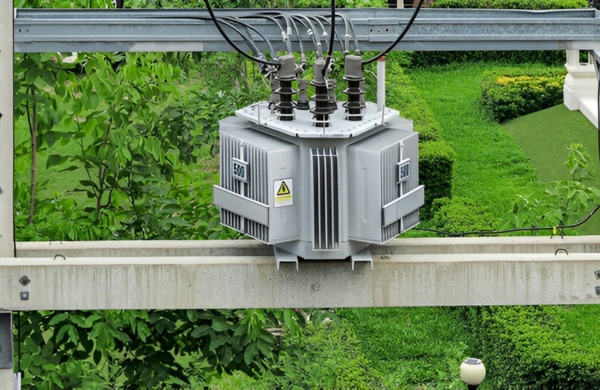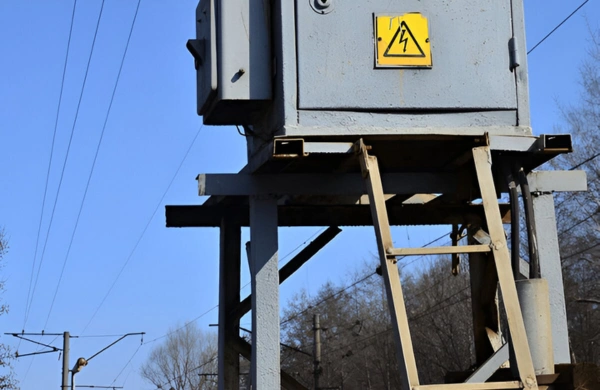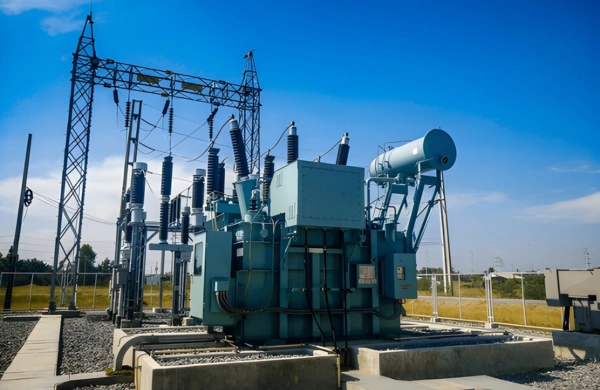Introduction
The modernization of electrical grids across North America is accelerating as utilities adapt to distributed energy resources, electric vehicles, and digital infrastructure. Traditional distribution transformers — though reliable — are limited in their ability to manage two-way power flow, monitor real-time data, or optimize energy distribution.
This evolution has led to the rise of smart distribution transformers, which integrate sensors, automation, and communication systems to improve grid reliability and efficiency.
Zetwerk designs and manufactures advanced smart-ready distribution transformers that combine conventional transformer reliability with embedded digital intelligence. Built to IEEE C57, IEC 61850, and ANSI standards, these transformers enable seamless integration into smart grids, renewable networks, and intelligent urban power systems.
Know About Smart Distribution Transformers Enabling Grid Modernization
1. The Role of Smart Transformers in Modern Grids
The energy landscape is transforming — with renewables, electric mobility, and decentralized generation creating bidirectional power flows that conventional transformers were not designed to handle. Smart distribution transformers bridge this gap by providing continuous monitoring, remote diagnostics, and adaptive voltage control.
Key roles include:
- Voltage regulation: Maintaining stable voltage under varying load and generation.
- Data communication: Providing real-time performance and fault data to grid operators.
- Load balancing: Distributing energy efficiently across feeders.
- Predictive maintenance: Monitoring temperature, load, and insulation health.
- Integration support: Enabling renewable energy and EV charging compatibility.
By combining traditional transformer reliability with IoT-based intelligence, Zetwerk’s smart units form the foundation of next-generation distribution grids.
2. Smart Design and Core Architecture
Smart distribution transformers combine conventional electromagnetic design with embedded sensing, control, and communication technologies.
Core and Windings:
Constructed using high-grade CRGO steel or amorphous metal cores for low no-load losses. Windings use copper or aluminum conductors with reinforced insulation for high electrical endurance.
Sensors and Instrumentation:
Each transformer integrates digital sensors to continuously monitor:
- Winding and oil temperature.
- Load current and voltage.
- Oil pressure and level.
- Harmonics and power factor.
- Partial discharge activity.
Digital Control Module (DCM):
A microprocessor-based controller collects, processes, and transmits operational data to SCADA or utility IoT platforms using standard protocols such as IEC 61850, Modbus, or DNP3.
Communication Interfaces:
Ethernet, LTE, or RF modules provide secure, real-time connectivity between transformers and control centers.
3. Electrical and Functional Performance
Zetwerk’s smart distribution transformers maintain all the performance benefits of conventional models while adding advanced monitoring and protection capabilities.
Typical specifications:
- Power rating: 100 kVA to 5,000 kVA
- Primary voltage: Up to 33 kV
- Secondary voltage: 240 V / 415 V / 690 V
- Frequency: 50 Hz or 60 Hz
- Efficiency: ≥99%
- Voltage regulation: ±1.5% or better
- Insulation class: Class F (155°C) / H (180°C)
Additional smart capabilities:
- Real-time load and temperature profiling.
- Harmonic analysis to detect nonlinear load stress.
- Predictive analytics for insulation and oil condition.
- Event recording for fault diagnostics and outage management.
Zetwerk ensures all electronic modules are shielded and tested for electromagnetic compatibility (EMC) and surge withstand capacity.
4. Enabling Grid Modernization
Smart transformers are a key enabler of grid modernization, providing the intelligence needed to manage decentralized and dynamic power systems.
Modern grid benefits include:
- Two-way communication: Data flow between transformer and control systems enables real-time decision-making.
- Dynamic voltage optimization: Maintains supply stability as renewable generation fluctuates.
- Fault isolation and response: Smart alerts reduce downtime through early fault detection.
- Energy efficiency: Reduces technical losses through precision load control.
- Interoperability: Integrates with energy management systems and renewable microgrids.
By deploying smart transformers, utilities and cities achieve greater grid resilience, flexibility, and operational visibility, supporting the broader energy transition.
5. Application Areas in Smart Grids
Zetwerk’s smart distribution transformers are designed for a broad spectrum of urban, industrial, and renewable applications.
Key application sectors:
- Urban substations: Enabling load monitoring and voltage regulation for cities.
- Renewable integration: Managing bidirectional power flow in solar and wind grids.
- EV charging infrastructure: Ensuring stable power supply with load balancing.
- Industrial automation: Supporting data-driven energy management systems.
- Utilities and smart cities: Providing digital visibility across distribution feeders.
Each transformer can be configured for pole-mounted, pad-mounted, or compact indoor installations, depending on site constraints and grid design.
6. Data Analytics and Condition Monitoring
Data collected by Zetwerk’s transformers provides actionable insights for utilities and grid operators.
Key monitoring functions:
- Load analysis: Detects peak demand and helps in demand-side management.
- Thermal behavior tracking: Predicts hotspots and prevents insulation degradation.
- Oil health monitoring: For oil-immersed versions, dielectric and moisture data ensure long-term reliability.
- Event logging: Records short-circuits, overcurrents, or transient surges for post-fault analysis.
- Predictive maintenance: Algorithms forecast failure trends, reducing unscheduled outages.
These insights help utilities transition from time-based to condition-based maintenance, improving asset utilization and reducing total cost of ownership.
7. Safety and Cybersecurity
Smart grid components must ensure not just physical reliability but also cybersecurity. Zetwerk integrates both hardware and software-level safety measures.
Physical safety features:
- Thermal sensors and alarms to prevent overheating.
- Surge protection and transient voltage suppressors.
- Enclosures rated IP55–IP65 for outdoor use.
- Fire-retardant insulation and arc-resistant construction.
Cybersecurity measures:
- Encrypted communication protocols.
- Multi-layer authentication for remote access.
- Firmware signing and update control.
- Data partitioning to protect sensitive grid information.
These measures ensure data integrity, operational continuity, and compliance with modern grid security standards.
8. Testing and Standards Compliance
Zetwerk’s smart transformers undergo comprehensive testing for both electrical performance and digital integration.
Electrical tests include:
- Ratio, polarity, and winding resistance tests.
- Load and no-load loss measurement.
- Impulse and dielectric strength tests.
- Partial discharge and temperature rise validation.
Digital and communication testing:
- Sensor calibration and accuracy verification.
- Data transmission latency testing.
- Protocol compliance with IEC 61850 and DNP3.
- End-to-end SCADA integration tests.
Zetwerk’s designs meet IEC 60076, IEEE C57.12, ANSI, and CSA standards, ensuring compatibility with North American utility networks.
9. Manufacturing and Integration Capabilities
Zetwerk’s integrated manufacturing ecosystem combines precision transformer fabrication with advanced electronic assembly and system integration.
Manufacturing highlights:
- Automated core cutting and winding for high accuracy.
- Embedded sensor integration under controlled conditions.
- Pre-calibrated digital modules for plug-and-play connectivity.
- Factory Acceptance Testing (FAT) with data logging and cloud simulation.
- ISO 9001 and ISO 14001-certified production lines.
With strong design flexibility and scalability, Zetwerk supports both pilot deployments and large-scale smart grid rollouts across North America.
10. Supporting North America’s Energy Transition
As utilities modernize infrastructure, smart transformers have become essential to grid efficiency and resilience.
Zetwerk’s capabilities include:
- Turnkey supply of smart-ready transformers for utilities and EPCs.
- Integration support with grid automation systems.
- Data interface customization per North American protocols.
- Long-term reliability in harsh climates (−40°C to +50°C).
- Engineering support for renewable and hybrid grids.
By combining transformer expertise with digital intelligence, Zetwerk helps utilities modernize distribution systems while maintaining reliability, safety, and sustainability.
Conclusion
Smart distribution transformers are redefining how electrical energy is monitored, controlled, and distributed. They form the cornerstone of the modern, digital grid — enabling real-time analytics, fault detection, and intelligent load management.
Zetwerk manufactures smart-ready distribution transformers engineered for high efficiency, robust communication, and seamless grid integration. Designed to meet North American utility standards, these transformers support the shift toward renewable energy, digital grid control, and data-driven reliability.




With proven transformer manufacturing expertise and digital engineering capabilities, Zetwerk delivers the hardware backbone for the intelligent power networks of tomorrow.
FAQs
a. It’s a transformer equipped with sensors and communication systems for real-time monitoring and grid connectivity.
a. They enable remote monitoring, predictive maintenance, and improved voltage regulation.
a. Yes. All designs support IEC 61850, DNP3, and Modbus protocols.
a. Absolutely. Smart transformers manage bidirectional power flow and grid synchronization.
a. Minimal — sensors and modules are factory-calibrated and designed for 15–25 years of service.








